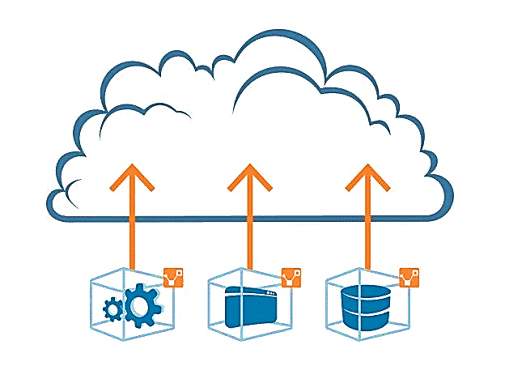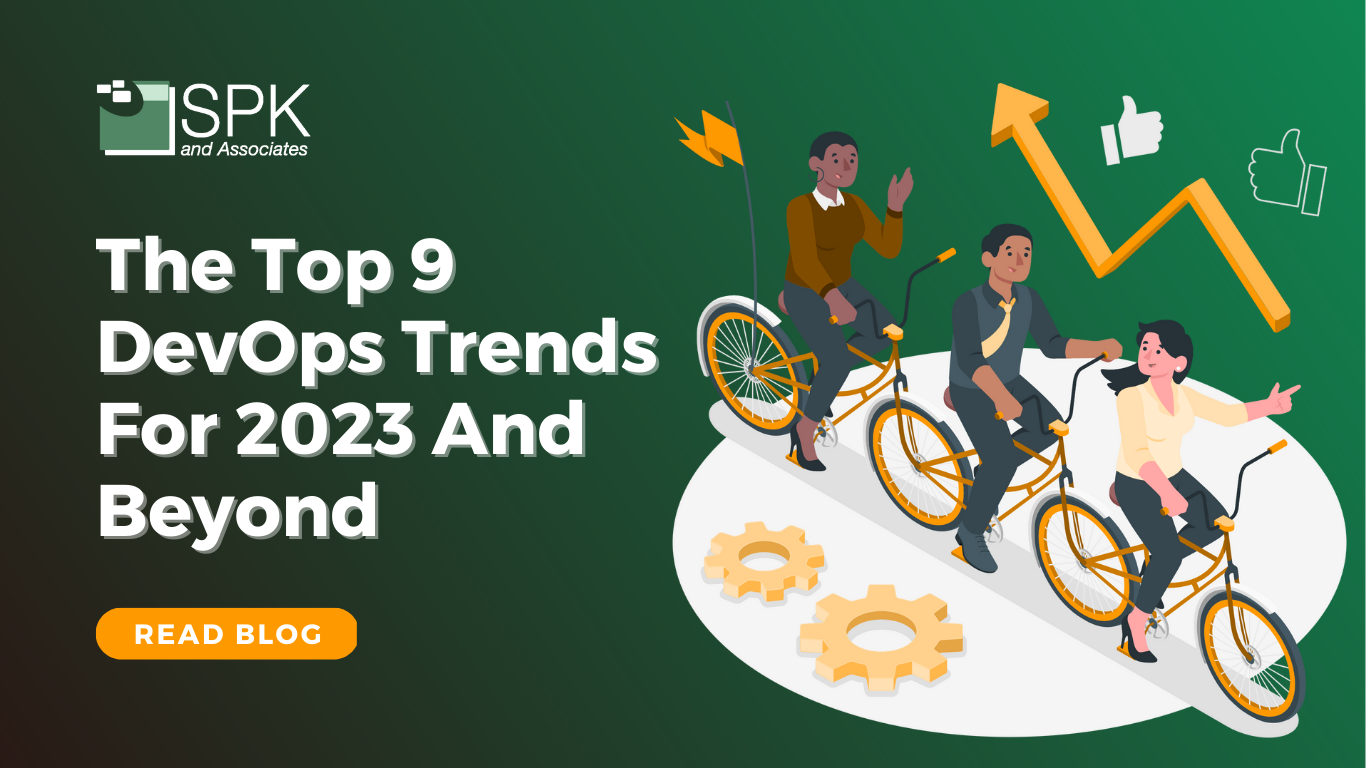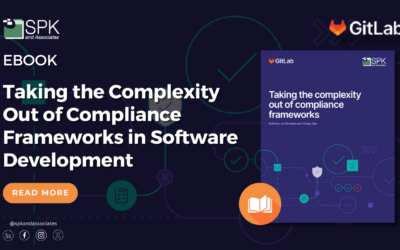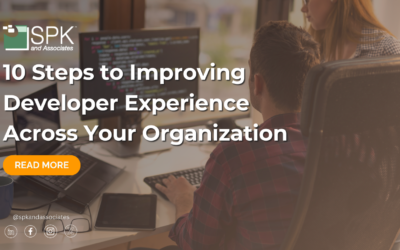Firstly, if you’re unfamiliar with DevOps, you can check out this video that covers all the basics and how it will benefit your company. But, essentially DevOps is about integrating software development practices, and the processes and procedures of IT Operations. In doing so, you create a more efficient, and customer-focused approach to software delivery. And there are some interesting DevOps trends changing the industry. We’ll dive in to those shortly.
If you are familiar with DevOps, you know that tools can mask or hide the real cultural problems that exist between software developers and systems administrators. So, this article will not talk about tools as the savior of DevOps in any organization. Instead, this article highlights the trends shaping the industry. Additionally, we’ll cover how these DevOps trends are helping businesses drive better business outcomes by using the DevOps methods, tools and practices.
DevOps Trends 2023:
1. FinOps
If you’ve used any cloud infrastructure, you know that spending money with AWS or Azure can easily explode without the right controls. Gone are the days of corporate leadership approving the purchase of 100 servers at a time. And then IT putting them in service (knowing that IT can’t spend any more money than what was approved for the 100 servers!) Now, any AWS or Azure administrator can spin up a service that may only cost $1 today, but may be $1M tomorrow. Financial controls are a definite problem in the cloud. So the FinOps term has trended in the industry in recent years. Otherwise known as cost optimization, FinOps describes the best practices for optimizing cloud spending to increase profit margins for the company. The goal of FinOps is to bring financial accountability to cloud expenditures. It does this by cross-team collaboration to strike a balance between speed, cost, and quality. As of 2022, a study from FinOps Foundation said 43% of CTOs, 24% of CIOs, and 17% of CFOs collaborate with the FinOps team in an enterprise-level organization.
That means organizations are already seeing the problems of rampant cloud spend. Additionally, they are putting serious resources into remedial action. FinOps solutions are all over the place today. For example the actual tools from the major cloud providers and 3rd parties, and simple meeting and collaboration between those that control the spend with those paying for it. You will see more structure around FinOps in the future as enterprises demand better cost controls.
2. Automation with AIOps and MLOps
Artificial Intelligence (AIOps) and Machine Learning (MLOps) are two of the DevOps trends, with the prediction of it becoming a $644 billion market size by 2030. Organizations are storing huge volumes of data . So, it’s easy for DevOps release processes to see some benefit from AI and machine learning applications. With the principle of continuous improvement, teams are always trying to enhance their processes to enable quick-release and high quality. This is where AIOps and MLOps have a significant role to play in the future. While AIOps can help you automate IT operations and processes, MLOps standardizes the ML system development. Thus, AIOps allows systems administrators to identify the root cause of problems slowing productivity and efficiency. And MLOps helps streamline processes and increase productivity.
Companies are already adopting AIOps and MLOps through tools like AppDynamics, Splunk Enterprise, Datadog, New Relic and more. Expect this industry to grow. Also expect many current DevOps tools to be enhanced with AIOps and MLOps capabilities in the future.
3. Microservices
The concept of microservices is not new. In fact it’s been around for quite some time. And it has been dominating the IT industry because of its tailor-made goal breaking down the large monolithic systems that IT groups normally have. How does it do this? Basically, microservices architecture breaks down large systems into smaller, simpler streamlined components. This helps to reduce risk and improve product quality.
As prevalent as microservices architecture is, there are still many enterprises that haven’t fully adopted the microservices approach. This will start to slow them down. A few years ago, The Coca-Cola Company decided to move forward with a DevOps approach with microservices. Their outcome was:
- A reduction in the network data flow by 50%.
- Reduction in the time required to support one-off machines from weeks to a few minutes.
4. Cloud-native Tools DevOps Trends
The quicker you can get your product in the hands of the consumer, the quicker you can get feedback to make a better product. That’s why if you’re not using Kubernetes, Docker, Helm, or similar tools you should plan to. Like, yesterday.
Cloud-native tools:
- Enable microservices architecture.
- Allow software to be designed and deployed with much less effort and potential human error.
This new software development and deployment approach has many DevOps benefits, including:
- Allowing teams to iterate faster by reducing the dependencies on a single system.
- Helps developers deploy changes without disrupting production services.
- Overall faster time to market.

Github has curated a large group of cloud-native tools. SPK has found these to be very useful when looking for alternatives to software that may be prohibitive but still wanting to be cloud native. In the future, we see cloud-native being the only way applications are developed.
5. Automation of CI/CD
As most folks probably already know, a CI/CD pipeline automates your software delivery process. The pipeline builds code, runs tests (continuous integration (CI)), and safely deploys a new version of the application (continuous delivery). Automated pipelines remove human errors, provide standardized feedback loops to developers, and enable fast product iterations. We use tools like Jenkins, CloudBees CI, CloudBees CD/RO, Atlassian Bitbucket, and Bamboo to perform many of the automated CI/CD tasks.
Over the past decade, I’ve seen:
- Deployments that have gone from systems administrators that have to copy files, and add columns to databases (much like Matt Stratton described at DevOpsDays Rockies in 2017).
And seen these move to:
- Automated deployments done by the developer that fixed the bug 2 minutes ago being in production.

Automation is a trend many companies want. But it requires investment in things like microservices, cloud-native technologies, and other modern software development practices. As organizations move towards automating their infrastructure, they will also automate their testing and deployment processes.If you can automate testing and deployment, everything else is easy. If you can practice TDD, and ATDD, then manual tasks begin to disappear.
6. Low-code Applications DevOps Trends
I’m not a fan of low-code solutions solving enterprise DevOps software delivery problems. But I do increasingly see this and believe it is now a trend that is impacting the future of DevOps.
Tools like Mendix, OutSystems, and Microsoft Power Apps put powerful tools in the hands of people with zero to minimal formal software development training or experience. Overall, this is a great opportunity. But, there are also areas for concern. Particularly because of what is at stake and what could go wrong. However, I’m hopeful that these platforms have built enough guardrails in place to prevent large scale problems occurring.
The benefits of this trend include:
- Teams getting started quickly.
- Little required experience or knowledge with the capability to extend to developers when the time is right.
- This allows things like prototypes or POCs (proof of concepts) which enable innovation. I’m a huge fan of that.
7. DataOps
I’ve heard some people refer to DataOps as “Database DevOps”. And while I think the term is cute, I think it’s definitely different from that.
DataOps refers to an increasing cooperation between various teams that manage data and those that are releasing software. In my view of DevOps, those that are part of database teams were always a part of the Dev side of DevOps. However, many organizations take the term ‘DevOps’ literally and think that if you’re not in Dev or Ops, you’re not a part of the party. On the contrary! Dev includes any and all people involved in the development process. Therefore this absolutely includes the database teams and other shared services teams that manage data. However, since everybody feels their name has to be included in a new term, sure. Let’s go with DataOps.
The value of the DataOps movement is that data engineers and analysts are now involved in discussions about AIOps and MLOps. And, the DataOps movement enables organizations to take advantage of a few things that a simple approach to DevOps may not have. Firstly, you’ll have true data democratization. All organization members who could profit from the data have access to it. Secondly, there should be a time reduction for gaining data insights. Why? Because everyone has equal access to and visibility of the data, they can quickly conclude and make improvements. Lastly, there is now some governance behind all of the data being generated and reviewed. Having a DataOps approach guarantees uniform data generation, consumption, and deletion procedures, guaranteeing central data governance.
8. GitOps DevOps Trends
GitLab defines GitOps as:
“an operational framework that takes DevOps best practices used for application development such as version control, collaboration, compliance, and CI/CD, and applies them to infrastructure automation.”
GitOps is supposed to help cloud infrastructure management which in turn will support better DevOps practices. But, while important, not all IT teams have embraced the GitOps approach to infrastructure management. This is because they don’t have the Git background and understanding.
As a single source of truth, Git helps developers manage operations through infrastructure as code and by initiating merge requests. Leveraging Git as a core hub for modifying infrastructure, GitOps uses Git pull requests to automatically integrate changes.
9. DevSecOps
No, I didn’t intentionally leave security for last. Technically, I feel it’s the most important because it saves so much and should be up front. But I did make it as the last in our list of trends for effect. Typically, organizations leave security as the last checklist review before products go out the door. But it shouldn’t be that way. So, the DevSecOps concept includes security early in the development process. Not only at the end.This concept puts security as an intrinsic part of software development. Not just an afterthought. This has been a rising issue in the industry for years, as software developers create code without thinking about potential vulnerabilities.
DevSecOps will be a huge challenge for many organizations. Because culture will play a role. However, innovative enterprises must look at methods to make security part of their baked-in product and not an afterthought. Most of this is done through tooling, policies, and better collaboration with security analysts.
Conclusion
These DevOps trends mean changes are coming to the DevOps method. And being ready is a key part of how your organization can be successful. The goal of DevOps is to help organizations transform and change. This happens mostly through the tools. But more importantly it must happen through the processes, methods and collaboration changes to create a better product. The future of DevOps has never looked brighter. So it’s time to start exploring the latest DevOps trends now..
If you’re debating the best DevOps tools to implement, or the right architecture to choose from, contact our team for expert advice.






